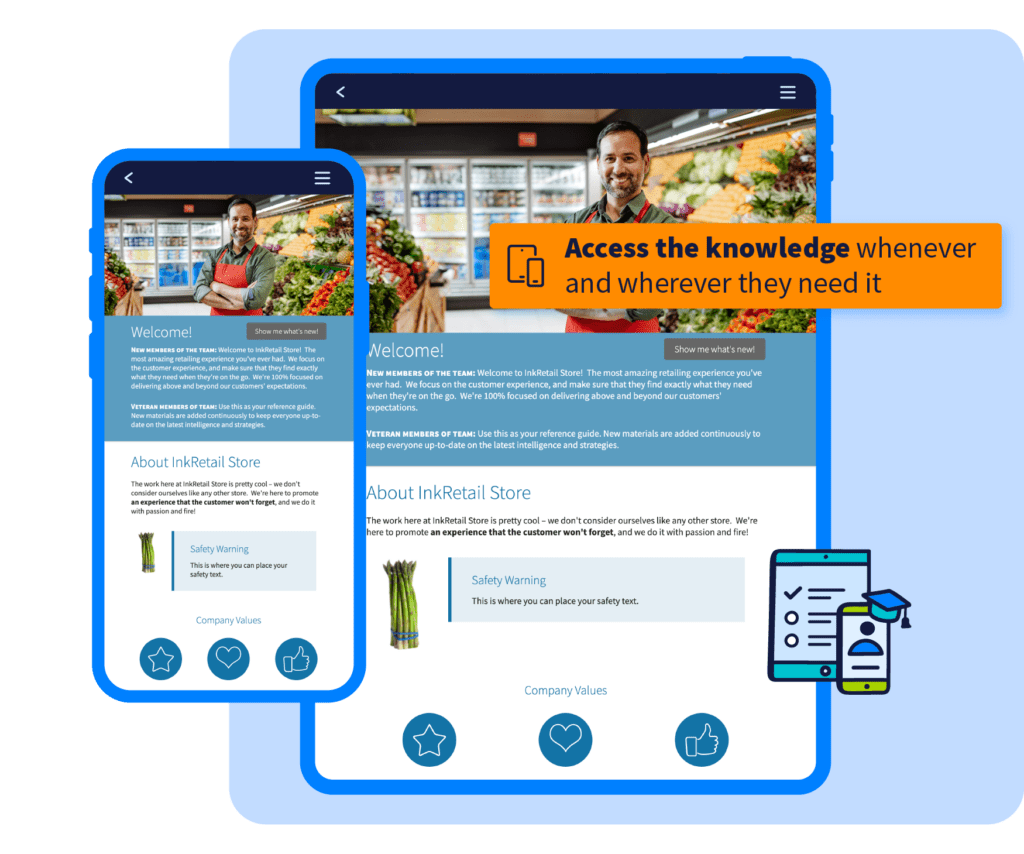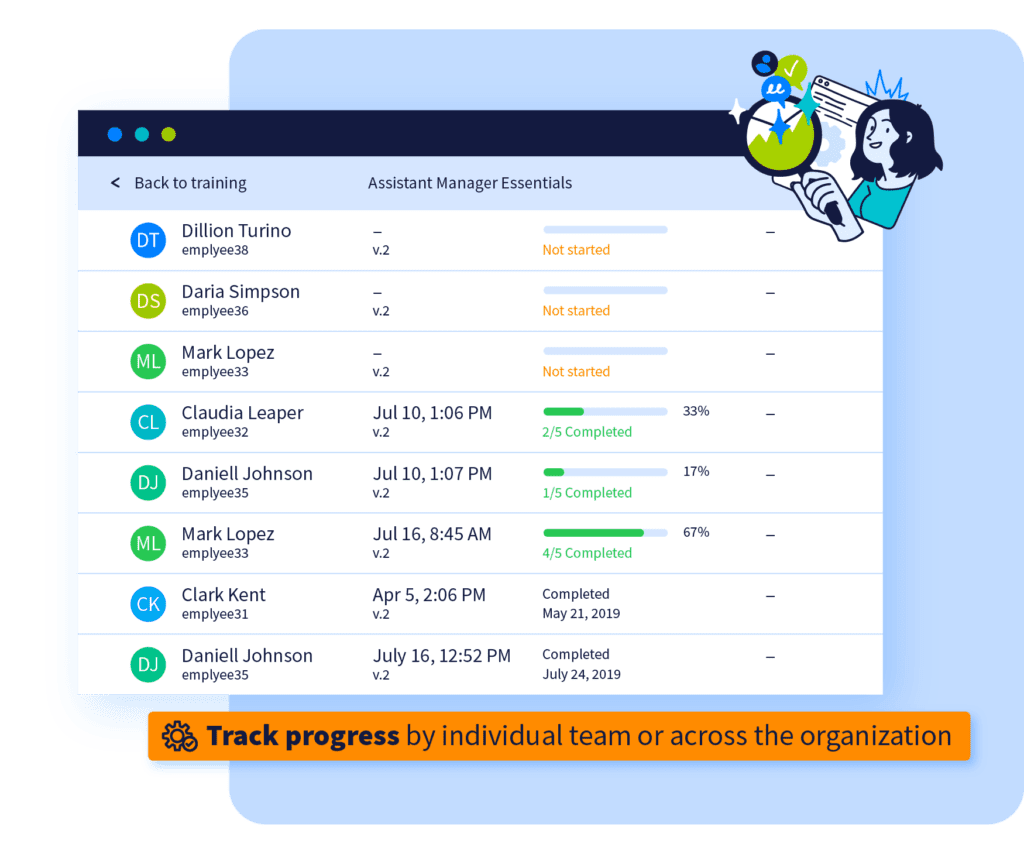The Power of eLearning Frontline Training: How to Boost Productivity and Performance

In today’s fast-paced business environment, staying ahead of the competition is crucial. One way to gain a competitive edge is by investing in effective training programs for frontline employees. Traditional training methods can be time-consuming, and costly, and often result in information overload. However, with the advent of eLearning frontline training solutions, organizations can now provide efficient and engaging training experiences that boost productivity and performance.
The Benefits of eLearning Frontline Training
eLearning frontline training offers numerous benefits compared to traditional training methods. Firstly, it provides flexibility and convenience, allowing employees to access training materials anytime and anywhere. This is particularly valuable for frontline workers who may be located in various locations or work irregular hours. Additionally, it allows employees to learn at their own pace, ensuring that they fully grasp the content before moving on.
Another benefit is the cost-effectiveness. Traditional training methods often involve expenses such as travel, venue rentals, and printed materials. With eLearning, these costs are significantly reduced or eliminated. Moreover, it reduces the need for trainers to deliver the same content repeatedly, freeing up their time to focus on other important tasks.
The Impact on Employee Productivity
Implementing eLearning frontline training solutions can have a significant impact on productivity within an organization. By providing employees with the knowledge and skills they need to perform their jobs effectively, organizations can ensure that frontline workers are equipped to handle their responsibilities with confidence.
It also minimizes the time spent away from work for training purposes. Unlike traditional training methods that require employees to attend in-person sessions, eLearning allows employees to complete training modules during their scheduled breaks or downtime. This means that productivity is not sacrificed while employees are undergoing training.
Furthermore, a frontline training solution promotes continuous learning. With easily accessible training materials, employees can refresh their knowledge or learn new skills whenever necessary. This ongoing learning process contributes to a more agile and adaptable workforce, capable of meeting evolving industry demands.
How eLearning Frontline Training Improves Performance
Let’s talk about how eLearning transforms the performance game for frontline workers.
First things first, eLearning doesn’t just teach; it empowers. When your frontline team gets the lowdown on their roles and responsibilities, it’s not just about ticking off a checklist. It’s about boosting their confidence, making them ace their tasks with efficiency, and giving them the mojo to tackle challenges independently.
Now, let’s dive into the tech side of things. In the digital era, knowing the tech ropes is like having a secret superpower. eLearning equips your frontline squad with the skills to navigate digital tools and systems like seasoned pros. Say hello to increased productivity and a performance boost that’s music to your organization’s ears.
But wait, there’s more. eLearning is not a one-and-done deal. It’s a culture shifter. Regular updates and fresh training materials keep your team on their toes, in tune with the latest industry trends, best practices, and regulations. This continuous learning vibe? It turns your workforce into a highly skilled and motivated crew, ready to dish out exceptional results. Say goodbye to the mundane, and hello to a frontline that’s ready to shine.🚀✨
Best Practices for Implementing eLearning Frontline Training
Implementing eLearning frontline training requires careful planning and execution. To ensure the success of such programs, organizations should consider the following best practices:
- Identify specific training needs: Conduct a thorough analysis of the skills and knowledge required for frontline workers. This analysis will help determine the content and structure of the eLearning modules.
- Create engaging and interactive content: To maximize the effectiveness of eLearning frontline training, it is crucial to design engaging and interactive content. Utilize multimedia elements such as videos, quizzes, and simulations to keep employees engaged and facilitate learning retention.
- Provide ongoing support: Offer support resources such as discussion forums, FAQs, and access to subject matter experts. This support system ensures that employees have a platform to seek clarification and further enhance their understanding.
- Track and evaluate progress: Implement a system to track and evaluate employee progress throughout the eLearning frontline training program. This data can help identify areas of improvement and measure the overall success of the training initiative.
Choosing the Right eLearning Platform for Frontline Training
Selecting the right eLearning platform is crucial for the success of frontline training programs. When evaluating different platforms, organizations should consider the following factors:
- User-friendly interface: The platform should be intuitive and easy to navigate, ensuring that employees can access and complete training modules without any technical difficulties.
- Mobile compatibility: As frontline workers may not have access to desktop computers, it is essential to choose an eLearning platform that is mobile-friendly. This allows employees to access training materials using their smartphones or tablets.
- Customization options: Look for a platform that offers customization options to align with the organization’s branding and specific training needs. This will help create a cohesive and tailored learning experience for employees.
- Analytics and reporting capabilities: The eLearning platform should provide robust analytics and reporting features to track employee progress, identify knowledge gaps, and measure the effectiveness of the training program.
Tips for Creating Engaging eLearning Frontline Training Modules
Creating engaging eLearning frontline training modules requires careful planning and consideration. Here are some tips to make the modules more effective and enjoyable for employees:
- Use real-life scenarios: Incorporate real-life scenarios and case studies into the training modules. This helps employees understand how the training content applies to their daily work, making it more relatable and memorable.
- Include interactive elements: Incorporate interactive elements such as quizzes, drag-and-drop activities, and simulations to actively engage employees in the learning process. This interactivity enhances knowledge retention and keeps employees motivated.
- Keep modules concise and focused: Break down the training content into bite-sized modules to prevent information overload. Each module should focus on one specific topic or skill, making it easier for employees to digest and retain the information.
- Provide practice opportunities: Include practice exercises and assessments throughout the modules to allow employees to apply their newly acquired knowledge and receive immediate feedback. This hands-on approach reinforces learning and builds confidence.
Measuring the Success of eLearning Frontline Training
Measuring the success of eLearning frontline training programs is essential to gauge their effectiveness and make necessary improvements. Here are some key metrics to consider:
- Completion rates: Track the percentage of employees who complete the eLearning modules. A high completion rate indicates employee engagement and motivation.
- Knowledge retention: Assess employees’ knowledge before and after the training program to measure knowledge retention. This can be done through quizzes or assessments.
- On-the-job performance: Monitor changes in employee performance metrics, such as productivity, quality of work, and customer satisfaction. These indicators provide insight into the impact of the training on actual job performance.
- Feedback and surveys: Collect feedback from employees regarding their experience with the eLearning frontline training program. Surveys can provide valuable insights into areas that need improvement or further development.
Case Studies: Real-Life Examples of Successful eLearning Frontline Training Programs
To illustrate the effectiveness of eLearning frontline training, let’s explore two possible real-life case studies:
- Company X: Company X implemented an eLearning frontline training program for its retail store employees. By providing interactive modules on customer service, product knowledge, and sales techniques, the company saw a significant increase in customer satisfaction scores and sales revenue.
- Organization Y: Organization Y, a manufacturing company, introduced eLearning frontline training to improve safety practices among its factory workers. Through engaging modules on hazard identification, proper equipment usage, and emergency procedures, the organization experienced a significant decrease in workplace accidents and injuries.
Conclusion: Harnessing the Power of eLearning Frontline Training for Maximum Productivity and Performance
eLearning frontline training has revolutionized the way organizations train their frontline employees. By providing flexibility, cost-effectiveness, and improved accessibility, eLearning enables organizations to boost productivity and enhance performance. Through careful planning, engaging content creation, and continuous evaluation, organizations can harness the power of eLearning frontline training to equip their workforce with the skills and knowledge necessary for success. Take the first step towards transforming your frontline training program by booking a demo with Inkling today.




